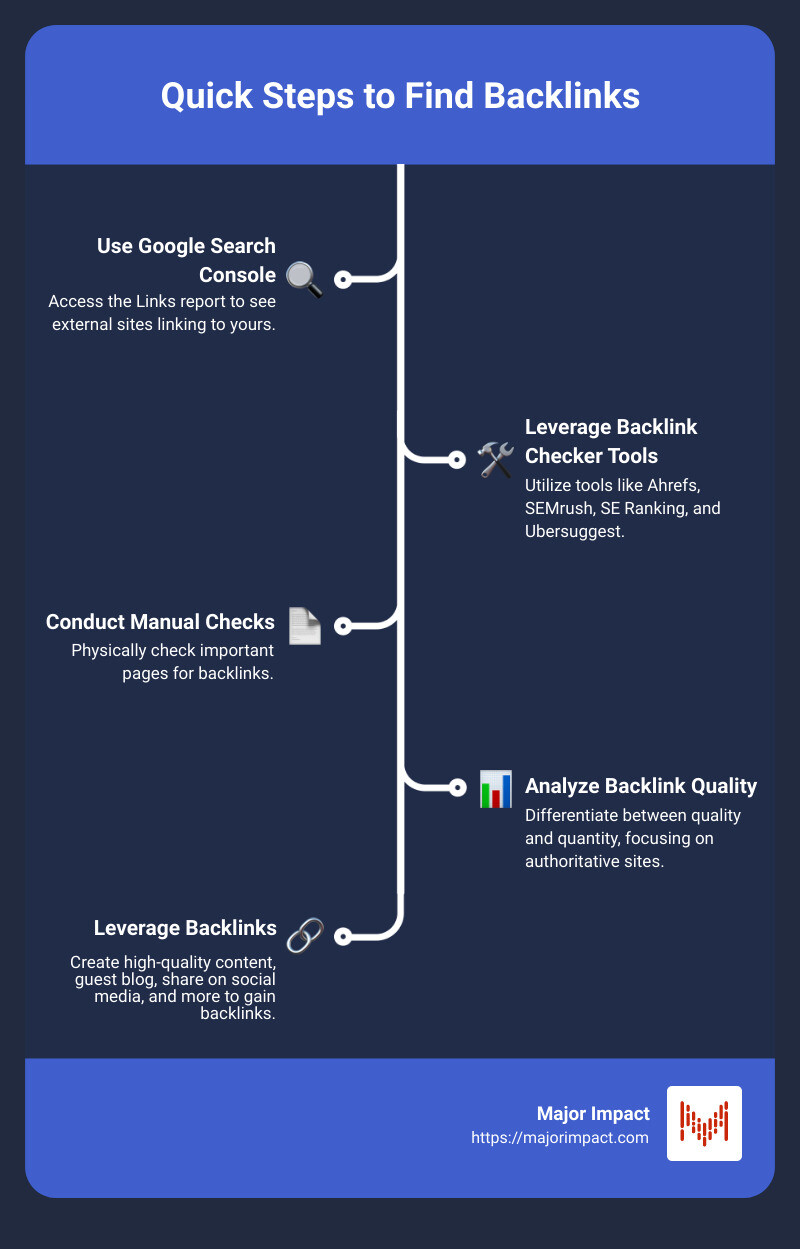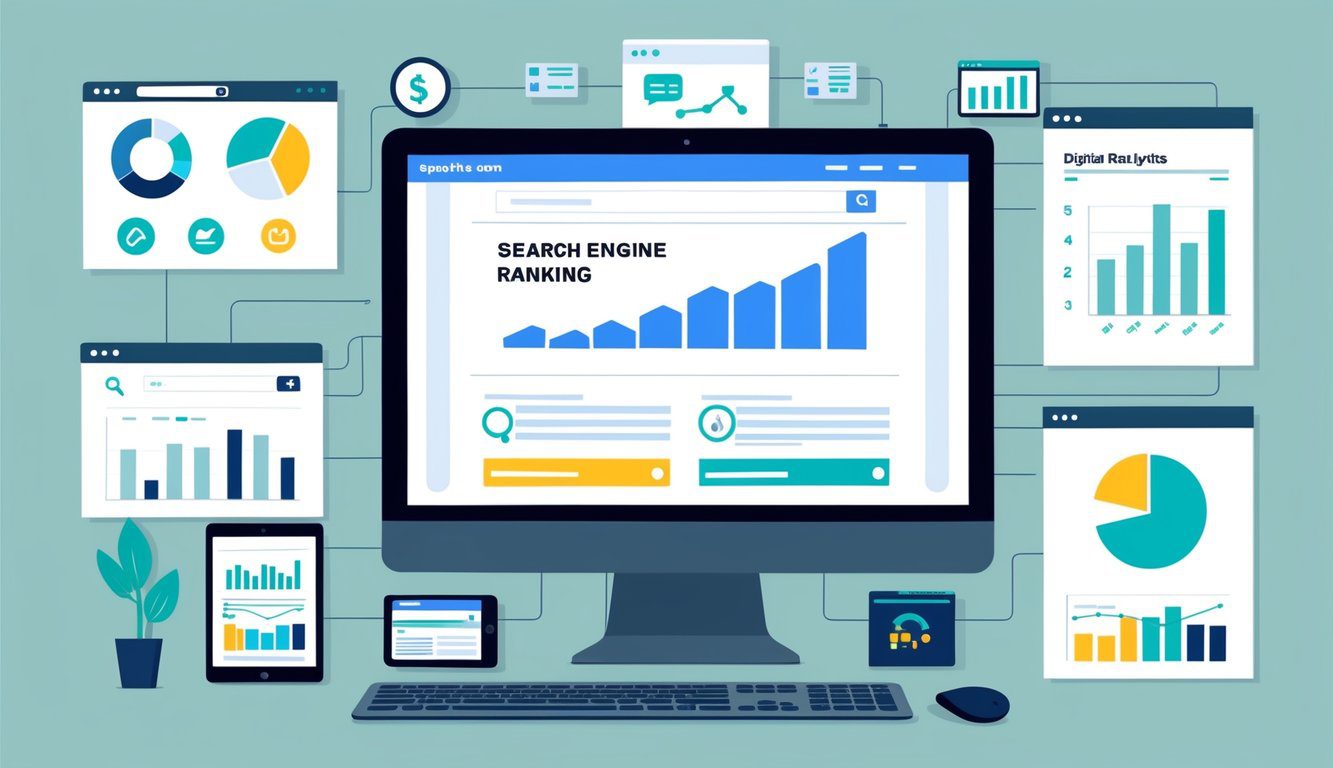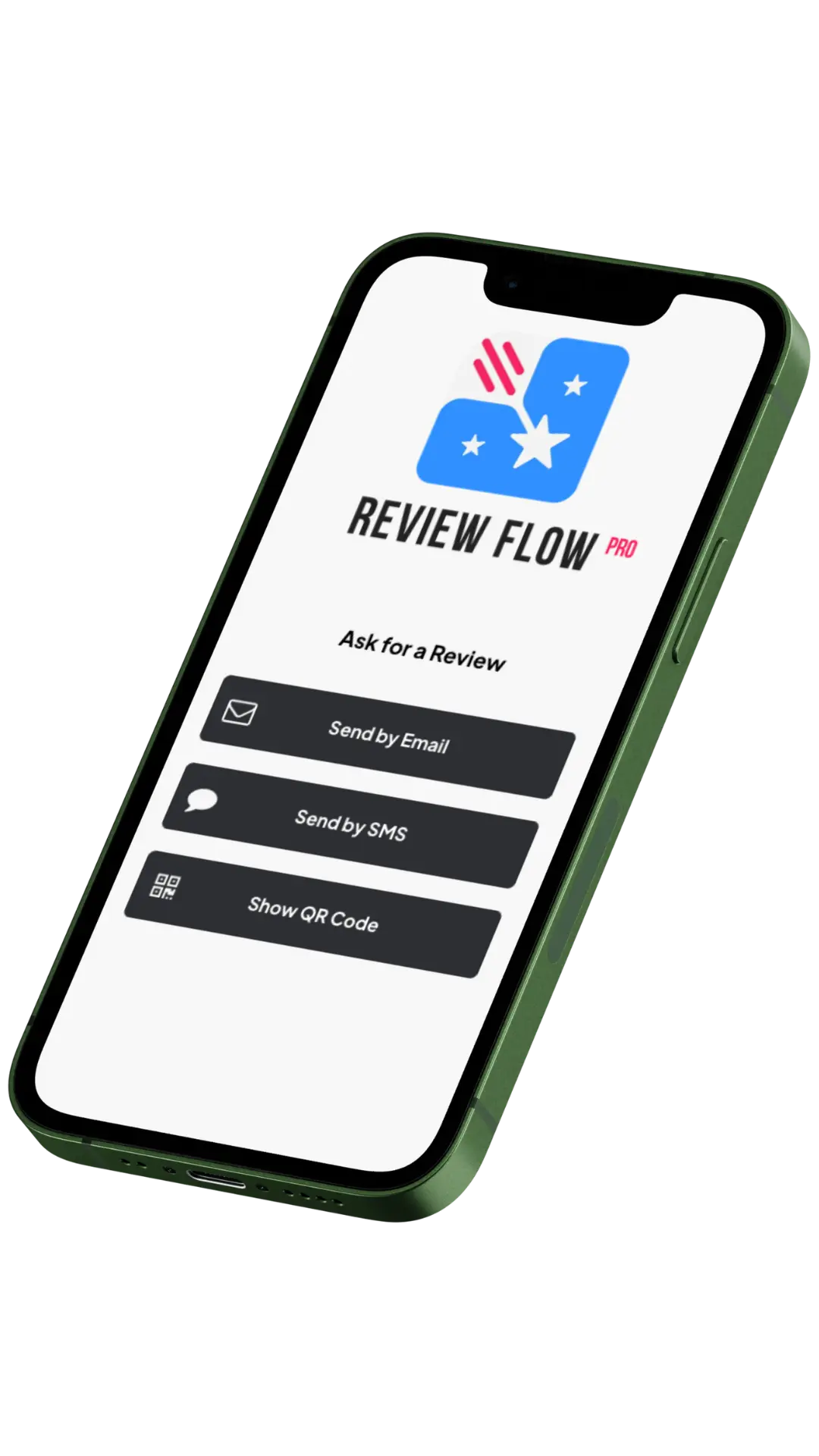Table of Contents
The Essential Guide to Finding Backlinks
How to find backlinks is a crucial question for anyone looking to improve their search engine rankings and SEO strategy. To find backlinks quickly, follow these methods:
- Google Search Console: Access the Links report to see external sites linking to yours.
- Backlink Checker Tools: Use tools like Ahrefs, SEMrush, SE Ranking, and Ubersuggest.
- Manual Checks: Physically check important pages for backlinks.
Backlinks are vital to your website’s search engine ranking. They act as endorsements from other websites, signaling to search engines like Google that your content is valuable and trustworthy. This can boost your authority, increase traffic, and improve your site’s overall visibility.
I’m Elliott Kosmicki, a web and SEO expert with decades of experience helping businesses like yours find and leverage backlinks for better search engine performance. Let’s dive deeper into why backlinks are important and how to find them.
Why Backlinks Are Important
To rank higher in Google search results, you need backlinks. Backlinks are external links that point from one website to another. They play a crucial role in SEO and can significantly impact your site’s performance. Let’s break down why these links are so vital.
Authority and Relevancy
Backlinks act like votes of confidence from other websites. When a reputable site links to yours, it signals to search engines that your content is valuable and trustworthy. This boosts your site’s authority.
But not all backlinks are created equal. Links from authoritative sites in your industry are far more valuable than those from unrelated or low-quality sites. For instance, a backlink from Forbes will carry more weight than one from a random blog.
Referral Traffic
Backlinks are not just for search engines; they also bring referral traffic. When someone clicks on a link from another site to yours, that’s referral traffic. The more relevant the link, the higher the chances of converting that visitor into a customer. For example, a local coffee shop gained new customers by collaborating with a popular food blogger for a guest post.
Link Juice
When a site links to yours, it passes on some of its SEO value, often referred to as “link juice.” This can help improve your site’s ranking. The more high-quality backlinks you have, the more link juice you receive, boosting your site’s authority.
Search Engine Crawlers
Search engine crawlers, like Google’s, follow these backlinks to discover new content. They use these links to determine how important or relevant a particular page is. The more authoritative websites linking to your site, the better for your search engine ranking.
In summary, backlinks are a powerful ranking factor that can help you boost your site’s authority, drive referral traffic, and improve your overall SEO. Next, let’s dive into how to find backlinks to take advantage of this powerful ranking factor.
How to Find Backlinks
Using Google Search Console
Google Search Console is a free tool that provides insights into your website’s performance, including backlinks. Here’s how to get started:
- Sign in to Google Search Console.
- Select your website from the dashboard.
- On the left-hand menu, click on ‘Links‘.
- Under ‘External links‘, you’ll see ‘Top linking sites‘. This shows the domains linking back to your site.
- You can also explore ‘Top linking text‘ and ‘Top linked pages‘ to get more details.
Pro Tip: Google Search Console updates may take time. So, be patient for recent backlinks to appear.
Using Ahrefs Backlink Checker
Ahrefs is another excellent tool for finding backlinks. Here’s how to use it:
- Go to the Ahrefs Backlink Checker.
- Enter your domain name.
- Click ‘Check backlinks‘.
Ahrefs will provide you with:
– Authority score of the linking domains.
– Anchor text used in the backlinks.
– Whether the links are follow or nofollow.
This tool offers a comprehensive analysis, helping you understand the quality and diversity of your backlinks.
Using SEMrush Backlink Analytics
SEMrush provides a robust platform for backlink analysis. Here’s how to use it:
- Sign in to SEMrush.
- Enter your domain name in the search bar.
- Go to the ‘Backlinks‘ tab.
SEMrush will show you:
– Authority scores of linking domains.
– Indexed pages that contain your backlinks.
– A detailed report on your backlink profile.
Pro Tip: SEMrush also allows you to monitor new and lost backlinks over specific periods, helping you track your link-building progress.
Using SE Ranking Backlink Checker
SE Ranking is another valuable tool for backlink analysis. Here’s how to use it:
- Log in to SE Ranking.
- Enter your domain name.
- Navigate to the ‘Backlink Checker‘ section.
SE Ranking provides insights into:
– Domain trust and page trust scores.
– Anchor texts used.
– The ratio of dofollow to nofollow links.
This tool helps you evaluate the trustworthiness and diversity of your backlinks.
Using Ubersuggest
Ubersuggest is a free tool that offers limited searches per day. Here’s how to use it:
- Go to Ubersuggest.
- Enter your domain name.
- Click ‘Search‘.
Ubersuggest will provide:
– A backlink list showing the domains linking to your site.
– Basic domain analysis including traffic and authority metrics.
Pro Tip: Ubersuggest is great for quick checks, but for more in-depth analysis, consider using it alongside other tools like Ahrefs or SEMrush.
By using these tools, you can uncover a wealth of information about your backlinks. This will help you improve your link-building strategy and boost your website’s SEO performance.
Next, let’s explore how to analyze backlinks to ensure they are benefiting your site’s SEO.
How to Analyze Backlinks
Analyzing backlinks is crucial to ensure they are helping, not hurting, your site’s SEO. Let’s break down the key factors you should consider:
Quality vs Quantity
When it comes to backlinks, quality trumps quantity. Links from authoritative, relevant, and trusted websites are more valuable than a large number of low-quality links. For example, a single link from a well-known industry site can be more beneficial than dozens of links from lesser-known websites.
Referring Domains
Diversity in referring domains is essential. Having backlinks from a variety of unique domains looks more natural to search engines. It’s better to get 10 links from 10 different domains than 100 links from just 2 domains. Multiple backlinks from the same domain can still be valuable if they are contextually relevant.
Anchor Text Diversity
Anchor text is the clickable text in a hyperlink. It’s important to have a mix of natural-looking, keyword-loaded, and branded anchor texts. Over-optimized anchor texts can look spammy and may lead to penalties. For example, instead of using “best running shoes” repeatedly, mix it up with “check out these shoes” or simply your brand name.
Link Velocity
Link velocity refers to the rate at which your site gains new backlinks. A steady, natural growth is ideal. An unnatural spike in backlinks can raise red flags for search engines. Aim for a consistent link acquisition rate to maintain a healthy link profile.
Follow vs Nofollow
Follow links pass link equity (ranking power) to your site, while nofollow links do not. However, nofollow links can still provide benefits, such as referral traffic and visibility. A balanced ratio of follow to nofollow links appears more natural.
Link Location
The placement of links matters. Links higher up in the content are typically seen as more valuable. Contextual relevance is also key—links embedded within relevant content carry more weight than those in footers or sidebars.
Toxicity Score
Toxicity score measures the risk level of low-quality links. Links from spammy or low-quality sites can harm your SEO. Tools like SEMrush provide a toxicity score to help identify and disavow these harmful links. Regularly check and clean up your backlink profile to avoid penalties.
By focusing on these aspects, you can ensure your backlinks are contributing positively to your site’s SEO. Next, we’ll discuss how to leverage backlinks for SEO to maximize their benefits.
How to Leverage Backlinks for SEO
Content Creation
Creating high-quality, unique, and valuable content is the foundation of any successful backlink strategy. When your content is informative and engaging, other websites are more likely to link to it. Focus on:
- Long-form articles: In-depth content often attracts more backlinks.
- Unique insights: Share original research, case studies, or unique perspectives.
- Visual content: Infographics, videos, and images can also attract links.
For example, a well-researched article with unique statistics can become a go-to resource, earning backlinks from other sites referencing your data.
Guest Blogging
Guest blogging is a proven way to build backlinks. Write articles for industry websites and include a link back to your site. Here’s how to do it effectively:
- Identify relevant blogs: Look for reputable sites in your niche.
- Pitch valuable content: Propose topics that will interest their audience.
- Include backlinks naturally: Ensure your links fit naturally within the content.
For instance, an email marketing software company could write a guest post for a digital marketing blog, sharing tips and linking back to their own resources.
Social Media Sharing
Sharing your content on social media platforms can attract attention and potential backlinks. Here’s how to maximize this strategy:
- Post regularly: Share your latest content on platforms like Twitter, LinkedIn, and Facebook.
- Engage with your audience: Respond to comments and encourage sharing.
- Use visuals: Posts with images or videos tend to get more engagement.
For example, a viral post on Twitter can lead to increased visibility and more sites linking back to your content.
HARO
Help a Reporter Out (HARO) connects journalists with experts. By replying to queries, you can earn editorial placements and backlinks. Here’s how to use it:
- Sign up for HARO: Choose categories relevant to your expertise.
- Respond quickly: Journalists often work on tight deadlines.
- Provide valuable insights: Offer detailed and helpful responses.
For instance, a digital marketing expert might get quoted in an article about SEO trends, earning a backlink to their website.
Directories and Listings
Listing your site in reputable directories can help build backlinks. Focus on:
- Niche-specific directories: Look for directories that are relevant to your industry.
- Online listings: Submit your site to general and local business directories.
For example, a local bakery might list their business on Google My Business and Yelp, gaining valuable backlinks.
Partnerships and Collaborations
Collaborating with other businesses and influencers can lead to mutual linking opportunities. Here’s how to leverage partnerships:
- Identify potential partners: Look for businesses or influencers in your niche.
- Propose mutual benefits: Offer something of value in exchange for a backlink.
- Create joint content: Co-author articles or host webinars together.
For example, a fitness trainer could partner with a nutritionist to create a joint blog post, each linking to the other’s website.
Broken Link Building
Broken link building involves finding broken links on other websites and suggesting your content as a replacement. Here’s how to do it:
- Identify broken links: Use tools like Ahrefs to find broken links in your niche.
- Create relevant content: Ensure you have a suitable replacement for the broken link.
- Pitch your content: Contact the site owner and suggest your link as a replacement.
For instance, if you find a broken link on a popular blog about SEO tips, you could suggest your own article on the same topic as a replacement.
By leveraging these strategies, you can maximize the benefits of your backlinks and improve your SEO. Next, we’ll answer frequently asked questions about backlinks to help you further understand and optimize your link-building efforts.
Frequently Asked Questions about Backlinks
How to Get Backlinks for Free?
Getting backlinks for free can be a game-changer for your SEO strategy. Here are some effective methods:
- Content Creation: Produce high-quality, unique content that others find valuable enough to link to. For example, a detailed guide on a trending topic can attract natural backlinks.
- Guest Blogging: Write articles for reputable sites in your industry. Include a backlink to your site. This not only builds links but also establishes your authority.
- Social Media: Share your content on platforms like Twitter, LinkedIn, and Facebook. This increases its visibility and can attract backlinks from those who find it useful.
- HARO (Help a Reporter Out): Respond to journalist queries on HARO. If your response is used, you often get a backlink to your site.
- Directories and Listings: Submit your website to reputable online directories. This is particularly useful for local SEO.
- Partnerships and Collaborations: Collaborate with other businesses or influencers. Mutual backlinks can benefit both parties.
- Broken Link Building: Find broken links on other websites and suggest your link as a replacement. For instance, if a blog has a broken link about SEO tips, pitch your own article on the same topic.
How to Find Backlinks Using Google?
Google Search Console is a powerful, free tool for finding backlinks to your site. Here’s how to use it:
- Sign in to Google Search Console.
- Select your website from the dashboard.
- On the left-hand side menu, click on ‘Links’.
- Under ‘External links’, you’ll see ‘Top linking sites’. This shows the domains linking back to your site.
This tool helps you understand who is linking to you and which pages are getting the most backlinks. It might take some time for recent backlinks to appear in the report.
Is There a Free Tool for Checking Backlinks?
Yes, several free tools can help you check backlinks:
- Google Search Console: As mentioned, it provides a links report showing who links to your site.
- Ubersuggest: Offers limited free searches. It gives you a list of backlinks pointing to a specific domain.
- SEO Review Tools: Their Backlink Checker allows you to see the top backlinks pointing to a specific domain.
- Ahrefs Backlink Checker: The free version shows the top 100 backlinks to any website or web page.
- Broken Link Check: This tool is great for identifying broken links on your website.
These tools can provide valuable insights, but for more comprehensive data, consider using advanced, paid SEO tools.
By leveraging these free tools and methods, you can effectively find and analyze backlinks, boosting your SEO efforts.
Next, we’ll wrap up with some final thoughts on how to maximize your backlink strategy for SEO success.
Conclusion
Backlinks are a cornerstone of SEO, and understanding how to find backlinks is crucial for improving your website’s search engine ranking. But finding them is just the beginning. To truly benefit, you need a comprehensive backlink strategy.
Backlink Strategy
A well-rounded backlink strategy involves more than just accumulating links. It’s about quality over quantity, ensuring you have diverse and authoritative referring domains, and maintaining a natural anchor text diversity. Regularly audit your backlinks to spot any low-quality or toxic links that could harm your SEO.
SEO Improvement
By leveraging high-quality backlinks, you can significantly improve your SEO. This means better search engine rankings, which lead to more organic traffic. And more traffic means more opportunities to convert visitors into leads and sales.
Traffic, Leads, and Sales
The goal of any SEO effort is to drive traffic, generate leads, and boost sales. With a strategic approach to backlinks, you can achieve these goals and take your business from invisible to unstoppable.
By following these guidelines and leveraging the right tools, you can master the art of backlink discovery and turn your SEO efforts into tangible business results. Ready to elevate your backlink strategy? Let’s make an impact together!












